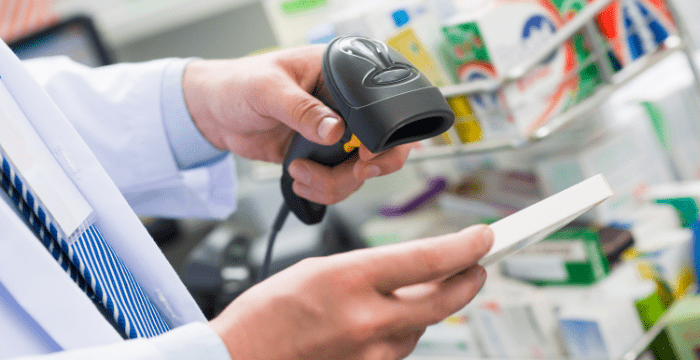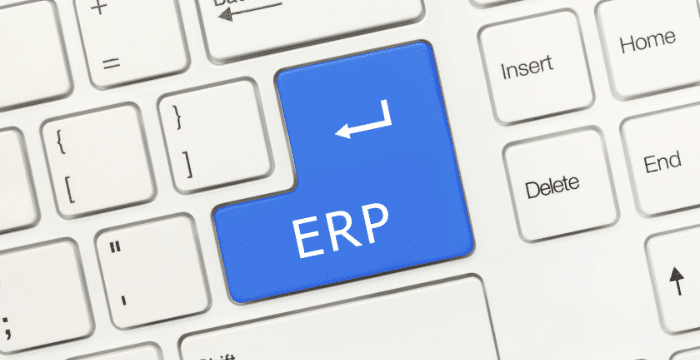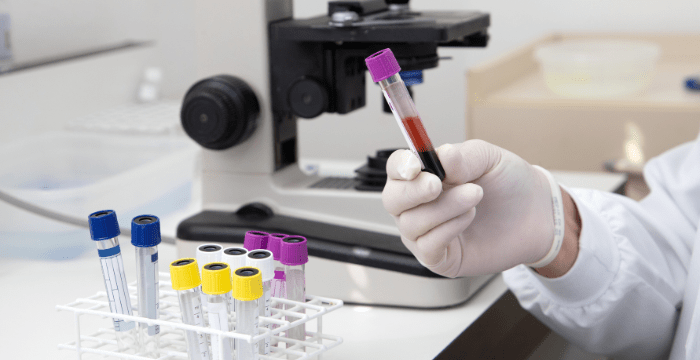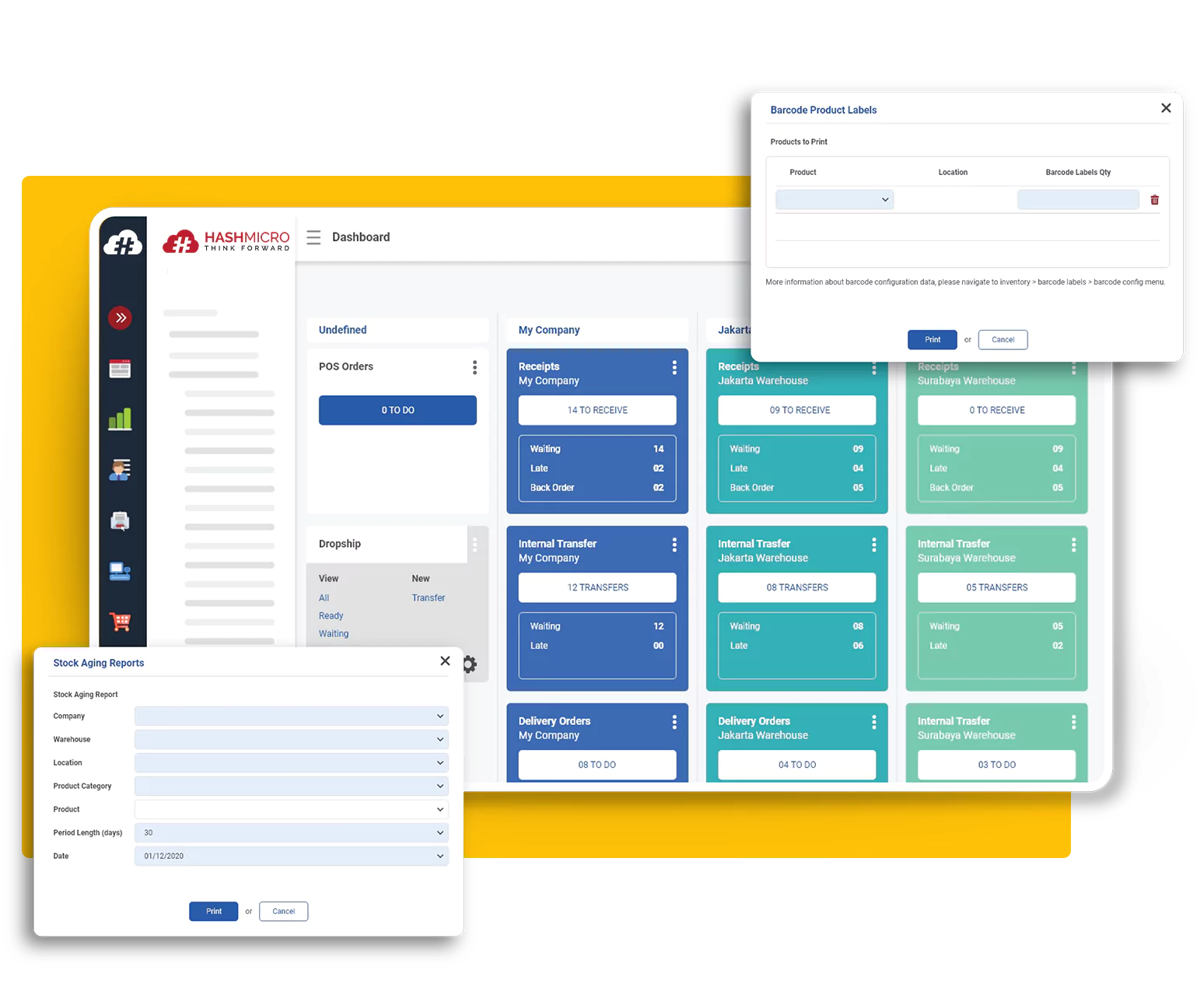Lab inventory is the collection of materials and supplies that are used in a laboratory setting. It includes everything from chemicals and reagents to equipment, glassware, and even consumables like gloves and pipette tips. Lab inventory is important because it helps maintain a smooth workflow and prevents unnecessary delays in research projects. Furthermore, managing lab inventory involves several key ways, including adopting Excel or ERP lab inventory.
Excel or ERP lab inventory offers an essential role in lab inventory control and planning. Lab inventory management includes of keep track of the quantities of each item in stock, regular inventory checks to update the stock levels and identify any items that need to be replenished, also to monitor the expiration dates of chemicals and reagents. Therefore, it’s very important to choose the right system to effectively managing lab inventory.
Both Excel and ERP lab inventory is useful in lab inventory management. But, ERP is known to be more effective rather than Excel because of some advanced factors. The fact that ERP is more effective must be considered in choosing the right lab inventory system since it has a huge impact on lab inventory management. Below are some discussions about what makes ERP the right choice for effectively managing lab inventory.
Table of Content:
Table of Content
What is ERP for Lab Inventory Management?
ERP for lab inventory refers to the use of an integrated software system that helps manage and control all aspects of inventory within a laboratory or scientific research environment. It streamlines and automates inventory management processes, providing a centralized solution to handle various inventory-related tasks. Then, here are some features of ERP for lab inventory that may benefit your lab inventory in the most efficient way.
1. Centralized inventory control

Centralized inventory control involves the consolidation of all inventory-related data and processes into a centralized database or system, providing a single source of truth for the laboratory’s inventory information. With centralized inventory control, all these items and their respective quantities, descriptions, and locations are recorded and maintained in a unified system.
This centralization brings several benefits to lab inventory management. One of them is providing a comprehensive and real-time view of the lab’s inventory. Lab staff can access the ERP system to quickly determine the availability of specific items, the quantity in stock, and their exact location within the lab. This eliminates the need for manual searching and reduces the time and effort required to locate and retrieve necessary items.
2. Procurement and purchase management
The procurement and purchase management feature in an ERP lab inventory is a powerful tool that simplifies and streamlines the purchasing process within a laboratory setting. It encompasses a range of functionalities to effectively manage the procurement of inventory items, maintain vendor relationships, and track incoming shipments since it’s essential to ensure a smooth flow of materials and supplies, as well as maintain optimal stock levels.
With the ERP system, lab staff can utilize the system to create purchase orders electronically. These purchase orders contain details such as the item name, quantity, preferred vendor, pricing, and delivery requirements. By digitizing this process, the ERP system reduces manual paperwork, enhances accuracy, and speeds up the procurement cycle to achieve successful research and experimentation.
3. Barcode and RFID tracking
The barcode and RFID (Radio Frequency Identification) tracking feature is a valuable tool that simplifies and automates the tracking and management of inventory items within the laboratory. Barcodes or RFID tags can be affixed to each inventory item, such as chemicals, laboratory equipment, or consumables. These tags contain unique identifiers that are linking to the corresponding item in the ERP system’s database.

An ERP system that integrates with barcode or RFID technology allows efficient and accurate tracking of inventory items. Lab staff can use handheld barcode scanners or RFID readers to quickly scan the tags on items as they are received, used, or moved within the lab. The scanned information is instantly transmitted to the ERP system, updating the inventory records in real time.
4. Stock monitoring and replenishment
The stock monitoring and replenishment feature helps ensure optimal stock levels and timely replenishment of inventory items within a laboratory environment. The stock monitoring and replenishment feature in an ERP system for lab inventory is a powerful tool that helps ensure optimal stock levels and timely replenishment of inventory items within a laboratory environment.
This feature allows lab staff to effectively monitor inventory levels and receive automated notifications when items reach a predefined threshold. It also helps prevent stockouts and enables timely replenishment, ensuring that the lab has a sufficient supply of materials at all times. With an ERP system, lab staff can easily access the inventory dashboard, which provides real-time visibility into the stock levels of different items.
5. Usage tracking and cost analysis
In a lab setting, it is important to track the usage of inventory items such as chemicals, reagents, and consumables. This feature allows lab staff to record the consumption of items in experiments or research activities. Lab staff can easily access the ERP system and input information regarding the items used, including the quantity, date, and purpose of usage.
With this feature, the lab data is automatically recorded and associated with the respective inventory item in the ERP system’s database. Additionally, the ERP system can generate reports and analytics based on recorded usage data. Lab managers can analyze consumption patterns, identify trends, and make data-driven decisions regarding inventory management.
Why is ERP Better than Laboratory Inventory Excel?
An ERP system is an automated software solution that offers significant advantages over manual processes such as Excel spreadsheets. It surpasses Excel spreadsheets in terms of integrated data, streamlined processes, real-time visibility, scalability, reporting capabilities, collaboration, security, and data integrity. ERP system is also easier to control because of its automation rather than Excel. Below are the other benefits that make ERP better than laboratory inventory Excel.

1. Increase efficiency
An ERP system enhances efficiency by automating and streamlining various laboratory processes. It eliminates manual tasks, reduces redundant efforts, and provides real-time access to accurate information, resulting in improved productivity and optimized operations. This automation reduces human error and frees up valuable time for staff to be more productive.
ERP systems also offer standardized workflows and processes, ensuring consistency and reducing variability in operations. By following predefined workflows, staff can complete tasks more efficiently, reducing the need for constant guidance or rework. The system provides reminders, notifications, and escalations, ensuring that critical tasks are completed on time, further enhancing efficiency.
2. Convenient processing of stock
An ERP system enables the convenient processing of stock by providing a centralized platform for managing inventory. With an ERP system inventory management, laboratories can easily track, monitor, and control their stock levels in real time. This eliminates the need for manual processes and spreadsheets, streamlining stock management and making it more efficient.

The system also automates tasks such as stock tracking, order management, and replenishment, allowing for accurate and timely processing of stock. Cloud based inventory solutions further enhance this by enabling real-time access to inventory data across multiple locations.
This convenience results in improved inventory control, reduced stockouts, and optimized stock levels, and ultimately leads to more efficient and cost-effective stock management processes.
3. Monitor expenses accurately
An ERP system can accurately monitor expenses in a laboratory by providing a platform for financial management and cost tracking. With this system, laboratories can easily record and track expenses related to equipment, supplies, chemicals, and other resources according to the laboratory’s needs and usage.
The system also allows the integration of purchasing data, invoices, and expense records, ensuring accurate and real-time expense tracking. Lab staff can input expenses directly into the system, eliminating the need for manual spreadsheets or paper-based processes. This streamlines expense management and reduces the chances of errors or omissions.
ERP for Lab Inventory Recommendation
For a better operation of laboratory inventory, you need to choose the right system and consider the quality. One of the best ERP system recommendations is the HashMicro ERP software or HashMicro’s Inventory Management Software. It offers an affordable ERP system that is equipped with various advanced technologies. This system surely will help you streamline the lab inventory management progress.

As HashMicro’s ERP system has various modules, customization is available for those who want to design their own dashboard according to their priorities. Also, this system has the Internet of Things (IoT), bank integration, mobile application, and other automation. What makes it more special is its unlimited user feature, which gives you multiple access without an additional fee, and controls it from multiple places.
Moreover, HashMicro provides a free demo that you can try before implementing the system in your laboratory. This free demo program will help you find insight and strengthen your consideration in choosing the most suitable ERP system inventory management.
Conclusion
In conclusion, utilizing an ERP system for lab inventory management offers significant advantages over relying solely on Excel spreadsheets. While Excel is a versatile tool, ERP systems provide an automated, comprehensive, and streamlined approach to inventory management. It addresses the unique requirements of laboratory environments.
Furthermore, ERP systems incorporate robust security measures to protect lab data. If you’re considering implementing an ERP system for your lab inventory, HashMicro offers an up to 50% discount for those Singaporean companies who are willing to apply for PSG Grant. With a more affordable price and a bunch of benefits, HashMicro ERP system can help you in assisting your lab inventory management to be more efficient. You can start HashMicro’s Inventory Management Software demo for free now.





































